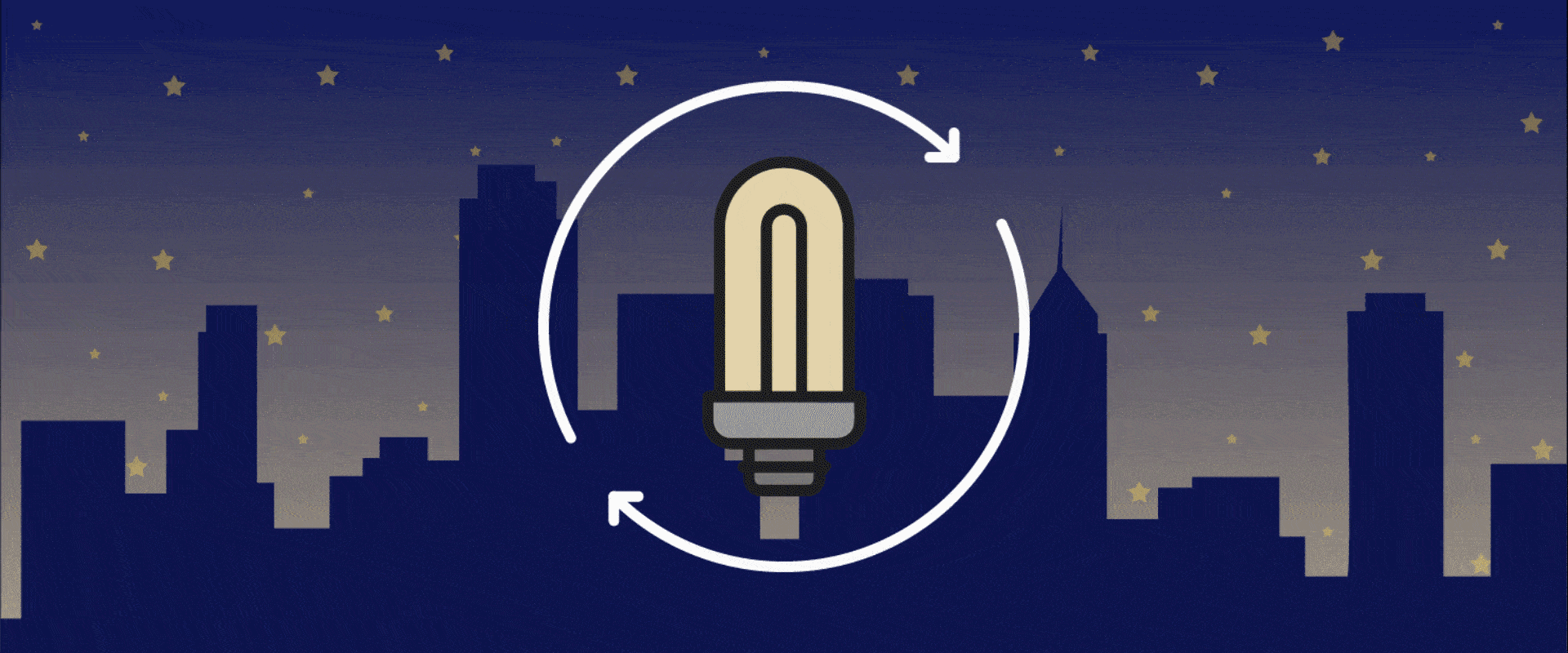
Avoiding the Rebound Effect when transitioning to LED
In Portugal, the average amount of light has risen 120% in the last five years. It is urgent to prevent the energy savings associated with the transition to LED from being offset by unnecessary lighting.
LED (Light Emitting Diode) lighting, which became widespread in the 2010s, represents a true revolution in lighting, something we have not seen since Thomas Edison invented the electric light bulb at the end of the 19th century.
Among the many advantages of LED technology over traditional lamps, the economy stands out. On average, LED lamps save about 70% of energy for the same amount of light, which associated with an increasingly competitive price has rightly motivated the widespread transition to this technology. This change is transversal to the various markets, and can be seen in domestic lighting, in cars, in industry and, of course, in public lighting.
In the latter, LED replacement has enabled municipalities to achieve significant savings in energy costs, while also having the beneficial effect of significantly reducing carbon dioxide (CO2) emissions because LED luminaires are highly efficient.
But not everything goes smoothly. One of the factors that has recently been pointed out to LED lighting is that it contributes to increase light pollution and the degradation of visibility of the night sky, which interfere not only with astronomical observation but also with the balance of ecosystems and the circadian rhythm – the compass that rules our biological clock – and can, therefore, cause negative effects on human health.
A brief analysis is enough to realize that the light pollution problem does not derive from LED technology, but from the amount of light. That is, it is a human and application problem, not a technological one.
Better lighting without additional light
When we look at the historical data for LED luminaires for street lighting in Portugal, we see that the average amount of light has gone up 120% in the last five years – this means that we are putting in more than twice as much light when compared to pre-existing lighting!
This effect, dubbed the Rebound Effect, has been verified by several scientists and corroborated by satellite analysis, which shows a gradual increase in light pollution in recent years. Often, the energy savings resulting from the transition to LED are counterbalanced by the investment in additional, often unnecessary, lighting, with the conclusion being that cheaper light does not lead to greater savings, but rather to an increase of more amount of light (1).
Evidently, LED is not the problem.
It is important to raise awareness among the population and policy makers to reduce light pollution, as already mentioned in the article Retrieve the starry sky with LED technology. The tendency is to always put more light on, as it improves visual acuity and increases the perception of safety. But this tendency should be avoided. On public roads it is always necessary to find the right balance.
It is extremely important that LED upgrade projects respect the pre-existing lighting conditions and not be tempted to increase them. In addition, preference should be given to the use of amber LEDs and, wherever possible, smart and lighting control systems such as ECCOS should be implemented, which allow dimming during off-peak hours, as well as saving additional energy.
Light, like any other resource, must be used responsibly and sparingly. It is up to all of us, public entities, and citizens, to acquire this awareness and, if necessary, to create compliant legislation that can guarantee sustainability, both economically and environmentally, and promote health.
Miguel Allen Lima
ARQUILED CEO
(1) https://skyandtelescope.org/astronomy-news/lost-led-revolution-light-pollution-increasing/





